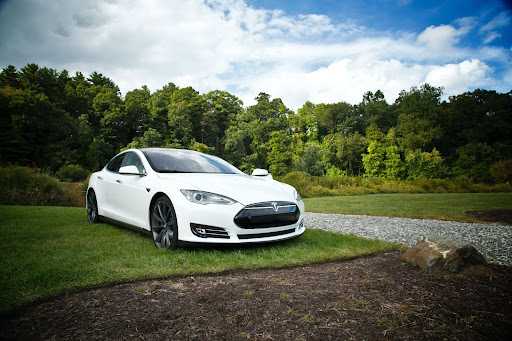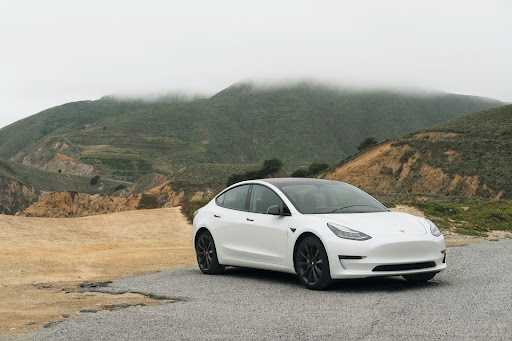9 Reasons Why You Shouldn’t Buy a Tesla
Since the day Tesla introduced its electric cars, they’ve been subject to many controversies. Despite their beautiful exterior – especially the futuristic falcon-wing doors – Tesla cars are still struggling to make people trust in them, and there are good reasons for that.
Here are 9 reasons to avoid buying a Tesla:
1. Safety
2. Quality issues
3. Power loss
4. No Engine thrills
5. Weak customer service
6. The Charging problem
7. High costs
8. Range anxiety
9. Cold weather problem
If you’re considering buying a Tesla EV, keep reading the remainder of this article to learn more about their usually hidden side. We’ve researched and gathered 9 reasons that can make you think twice about buying a Tesla car and help you make the right choice.
Why Buying a Tesla Isn’t a Good Idea
1. Safety
Safety has always been an issue with EVs, and Tesla is no exception. While Elon Musk boasts about Tesla Autopilot and the low number of accidents recorded for it, his provided information may be misleading.
In the 4th quarter of 2019, Tesla reported:
- One accident for every 3.07 million miles with Autopilot being engaged;
- One accident for every 2.10 million miles without Autopilot but with active safety features;
- One accident for every 1.64 million miles without any of them.
Tesla proudly compares these numbers with NHTSA’s most recent data that indicates every 479,000 miles, an automobile crash happens in the US.
With careful consideration, you’ll see that while NHTSA (National Highway Traffic Safety Administration) talks about “crashes,” Tesla’s statistic is about “accidents” and declines to clarify its meaning. Experts suspect that perhaps Tesla’s only listing crashes with airbag engagement are reported back to it, not minor dings.
Another issue with Tesla’s reported statistic is that around 94% of on-autopilot miles are in limited access freeways, while just 40% of its manual or cruise control happened on freeways. It’s common knowledge that driving in freeways is a lot safer than regular roads – 3 times lower fatality per mile.
In addition to presenting misleading statistics, there are some serious issues with Tesla’s self-driving features. One of them is the problem of conflicting information from different sensors, which was the case in a fatal Tesla crash – its sensors misinterpreted the detected truck as a sign road overhead.
Besides, harsh weather conditions can impair the sensors’ proper function. For example, rain can blur out the vision of onboard cameras, produce confusing reflections, and reduce the lidar sensors’ range and accuracy.
2. Quality Issues
Don’t get fooled by Tesla’s sleek and futuristic look. Its look has deceived many buyers who also thought they were purchasing a high-quality product but it let them down. Even Tesla itself admits its “shortcomings in the business process.”
As Tesla increased its production to 500,000 in 2020, it’s been struggling with quality issues and failed to satisfy its customers. With a bit of research, you can find numerous documented cases of quality issues with Tesla cars on social media. Notable gaps between body panels, low-quality paint jobs, rust, and even chipped glass are frequent issues.
Its touch screens also have a high rate of failure, forcing Tesla to recall 135,000 cars in the US. At first, it refused to recall cars, but Tesla was forced to do so under the NHTSA pressures. Interestingly, in a letter to the NHTSA, a Tesla executive stated that Tesla’s screens, used for controlling many car functions, aren’t supposed to last more than five or six years!
Another issue that isn’t unique to Tesla is their large batteries that entail a potential risk of firing. However, Tesla claims its cars are less likely to catch fire compared to other electric vehicles.
3. Power Loss
A common issue reported by Tesla drivers is the occasional power loss while driving, which can be dangerous. Many drivers reported an error on their touchscreens, stating that the “car is shutting down and to pull over.” Some even have noted the sudden blackout of touchscreens with no warning.
Here is a video uploaded by a Tesla driver that has documented this problem:
4. No Engine Thrills
Not only Tesla cars, but all EVs produce no noise like regular cars because they don’t have engines. NHTSA requires electric car makers to add some kind of noise to their vehicles to alert the inattentive or visually impaired pedestrians. However, Tesla’s Boombox mode – only installed on 2019 onward cars – may fail to satisfy your desire for a thrilling engine.
Engine sound is one of the critical features of high-end cars. However, Tesla’s engine-less cars can’t produce the roaring sound of a combustion car, which will kill the joy out of your driving experience.
While you can modify your Tesla’s Boombox mode to emit the sound of a V8 engine, you can only use this feature while you’re parked.
Another issue related to the sound of the Tesla cars is that many people complain about the inside cabin noises, which are more than a typical car – especially the tire’s sound.
5. Weak Customer Service
In recent years Tesla has been rightfully infamous for its awful sales and repair services. The purchasing experience from Tesla has been a nightmare for many Tesla owners. Delayed delivery and missed parts aren’t things to expect from a billion-dollar company like Tesla.
Many customers also complain about insanely big bills for repairing minor damages. According to customer reviews, in most cases, Tesla doesn’t replace minor components; so, they have to either replace the whole segment and pay a significant amount of money or just live with the damage.
The long and painful process of repairing a Tesla is another thing bothering Tesla customers. When they take their vehicle for service or repair, the process usually takes longer than what they’ve been told – for weeks or even months.
Additionally, some people complain about the customer service employees being unsupportive. Such an amateurish service level has highly compromised Tesla’s hard-winning reputation and is ruining its image.
6. The Charging Problem
Another big issue about Tesla cars – and other electric cars – is the charging issue. Despite the fast charging times at Superchargers – around 40 minutes to an hour – and 908 charging stations in the US, charging is still a big issue to deal with for most customers.
In more densely-packed cities like New York, most people live in apartments and don’t have private garages or parking lots to charge a Tesla overnight. So, they’ll depend on charging stations which are hard to find in such cities.
Even when they find a charge station, they’ll probably have to wait in long lines to get their car charged up – add in the time it takes for the Tesla to get fully charged.
Although rare, you may get out of the range of the nearest charging station and run out of battery. This scenario is more likely to occur in long-distance trips between states where charging stations are more dispersed.
As you see, there aren’t enough Tesla charging stations, and while charging them up at home is more economical, using your regular power outlets, and an extension cord isn’t safe; and installing a wall charger would cost you about $1000-2000.
7. High Costs
While many argue that the money you invest in buying an electric car like Tesla would come back into your pocket in the future, reality may be a little different.
When you buy a Tesla, you’d be paying more than its traditional or hybrid counterparts – Teslas prices range from $80,000 for a Model X to about $75,000 for a Model S and $40,000 for a Model 3.
Although Tesla cars are offering amazing features and functionalities, their prices are higher than what they actually should be – and Elon Musk knows it. Since almost all the EVs sold in the market are Teslas, there’s no real competitor for it, and it’s taking advantage of this monopoly.
8. Range Anxiety Problem
Range anxiety – the fear of running out of battery before getting to your destination and charging up – is one of the major concerns of Tesla consumers; their concern is justifiable.
A Tesla Model 3 average range has been reported to be about 350 miles on a single charge. However, it heavily depends on the car’s speed, climate conditions, and payload.
As Tesla increases its production and more and more people turn to electric cars as alternatives for fossil-fueled vehicles, more charging stations will be needed. Even now, there aren’t enough stations, especially for between the states’ trips.
And as mentioned before, not all people can recharge their Tesla cars overnight at home, which implies they’ve got to find charging points and also wait for other cars to charge up.
9. Cold Weather Problem
Harsh climate conditions, especially cold weather, are among electric cars’ biggest enemies because it significantly affects their battery function. According to the reports, Tesla cars’ batteries have experienced up to 10% loss during the first year of driving in colder regions of the country.
A 10% loss in a year isn’t something to ignore as it can significantly take down its 350 miles per hour. To put into perspective, in normal conditions, this battery loss would be around one percent per year.
So, if you live in a very cold area with harsh winters, buying a Tesla wouldn’t be wise. While you can argue that battery degradation is something that all cars face, you should know that replacing their batteries wouldn’t cost you $5000.
Finals Words
Electric cars are great alternatives to regular combustion cars since they reduce harmful green gases. As the leading EV carmaker in the industry, Tesla has offered a lot, but it still has a long way to go. They’re far from perfect and have too many issues to address – especially its safety and service.
Amazon and the Amazon logo are trademarks of Amazon.com, Inc, or its affiliates.


